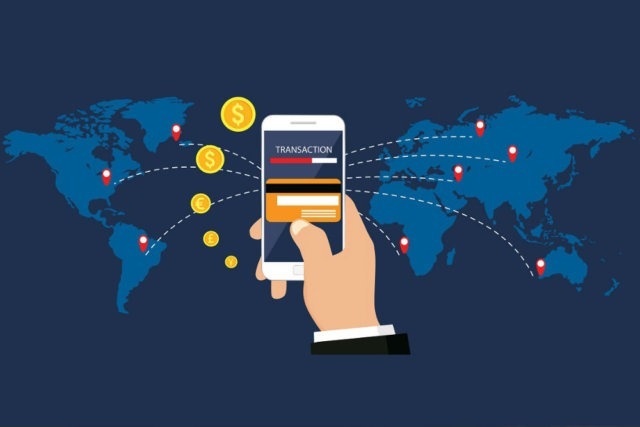Banking In The Metaverse: VR Powering The Banking Experience
We shall cover every aspect of “Banking in the Metaverse” in this post. Covid-19 has enhanced digital usage and acquisition, which the firm refers to as “digital transformation.” In the digital age, there will surely be a greater desire for non-face-to-face venues, and this trend is already beginning. Data security is a constant worry in today’s digital world. Banks and Fintech companies are working on launching a digital asset custody service.
Virtual reality is a hot topic in the world of technology, but what does it have to do with banking? Everything. The handling of financial transactions in virtual settings is called “metaverse banking.” This indicates that you can do business without ever leaving your house by teleporting from your living room to any bank worldwide!
Swiss Digital Asset Bank Opens Metaverse Hub
Sygnum will use #Decentraland as its #Web3 portal to the emerging #metaverse economy and is located in Decentraland’s self-proclaimed virtual equivalent of #NYC Times Squarehttps://t.co/7cOrLOLwZJ @thefintechtimes #banking #fintech pic.twitter.com/CH7I9NJCE4
— Glen Gilmore | 🌻🥽Metaverse 🕳🐇 (@GlenGilmore) September 4, 2022
Banks have used virtual reality for a while, but now that they are more widely available and less expensive, this technology can completely change how we think about banking.
The future of digital banking lies in virtual reality. Banks are studying virtual reality because it has the potential to alter how customers bank and deal with their money. As they investigate immersive technologies that may present new methods to engage clients via mobile devices or PCs, provide a better comprehension of complex data, and even better educate people, banks will increasingly adopt virtual reality (VR) technology. With the help of the metaverse, financial transactions will be possible in this virtual setting, resulting in an unmatched consumer experience.
Also Read: 7 Ways Asia Is Accepting The Upcoming Metaverse Industry
Describing Metaverse.
The Metaverse suggests virtual avatars, virtual reality, and immersive experiences to combat the idea of virtual reality.
But from where did this concept originate? Neal Stephenson popularised the term “metaverse.” The 1992 book has the first appearance of this word. The movie is titled “Snow Crash,” and it describes the Metaverse as a form of online virtual reality.
Use Cases: The metaverse is a platform for virtual reality where users can design their avatars. The metaverse would enable smooth communication between digital things in this virtual world. Because of its technological capabilities, it will be able to increase the enjoyment and engagement of live events and online buying for all kinds of banking sector clients. The OASIS meta-universe has a lot of similarities to Steven Spielberg’s “Ready Player One” movie; when we talk about banking, we are undoubtedly moving in that direction! Now picture what your bank may look like inside. Will you have a digital self-portrait, such as an avatar?
Managing monetary exchanges in the “Metaverse.”
What does “metaverse,” the newest buzzword, mean for banks and other financial institutions? The only limitation in the hypothetical metaverse would be one’s imagination. It could perhaps not be the best location for in-home business meetings. Like any other industry, the banking and financial sector has the potential to grow dramatically. They can provide a digital banking experience that is not limited by established time zones, geographic limits, or even regulatory ones.
In virtual worlds, financial institutions can develop novel client experiences and product offerings that transcend the boundaries of the real world. In a metaverse setting, transactions that were previously impossible or prohibitively expensive to conduct become possible. Imagine, for instance, that you could buy a product on one continent and have it shipped to you on another without ever leaving your house!
Some banks worldwide are preparing their services for an extraordinary customer experience by jumping on the Metaverse bandwagon in light of their success in digital banking. Financial institutions do not want to be left behind this time since creating new goods for the metaverse is suddenly interesting in a way that only occasionally occurs in any business. The dilemma is whether the story responds to the opportunity’s size or if it is a little ahead of where enabling technologies are actually at.
Banks are already investigating virtual reality to enhance the client experience. To allow clients to shop for products for their metaverse avatars and try on virtual clothing, Barclays has announced its plans to create a VR store in London. The concept is that, in the future, you would be able to enter a store, don some VR goggles, and view how your purchase would seem before making your final selection and paying with whatever currency you choose, including bitcoin or another cryptocurrency. Given what we know about people’s propensity for “buyer’s remorse,” this strategy of letting customers sample items online before making real-world commitments may prove quite useful when selling real estate.
Immersive technology has already received significant announcements from Bank of America, and the range of potential uses has increased. According to the bank, all of its financial centers will use VR headsets to practice a variety of skills, including:
- Building and deepening connections with clients.
- Managing challenging talks.
- Empathetic listening and response.
The Function of Analytics
To understand how clients use virtual reality financial services, fintech and banks must employ analytics. The metaverse will have a significant impact on analytics. It can be as easy as recognizing skill gaps, providing targeted follow-up coaching, and providing teammates with individualized advice through real-time data to help them perform better. Customer relations is the most obvious example of how the “metaverse” might impact banking. As mentioned, offering clients virtual settings can be the obvious next step in the digital customer experience.
They can use this information to improve these services and ensure they are fulfilling customer needs. Analytics can also be utilized to find fresh applications for virtual reality banking. For instance, a bank might decide to expand its selection of goods and services if it discovers that many clients are utilizing its virtual reality service to send money. By utilizing analytics, banks and fintech companies may remain ahead of the curve in this quickly changing sector and provide better customer service in the metaverse.
MetaVRse is working together to build a financial ecosystem based on blockchain technology that can offer cutting-edge solutions like user-controlled digital identities, registration services, and KYC compliance via crowdsourcing mechanisms. The possibility of banking in the metaverse is rapidly approaching. For instance, CBM Bank in the US is already working on providing its customers with an immersive virtual world experience; metaverse solutions will be accessible through augmented reality glasses and even smartwatches. This is an example of an alternative bank. This project aims to create an open metaverse infrastructure platform with higher privacy protection than current public blockchains by utilizing cutting-edge cryptography and AI technology.
The Chance for Banks to Advance Through Learning!
It is well known that the video game business will outperform Hollywood in sales, with revenues expected to exceed $174 billion in 2020 and $314 billion by 2026. Mordor Intelligence says (this).
With 1.5 billion gamers in the Asia Pacific alone and 2.69 billion gamers worldwide, it is not surprising that Asian banks see an opportunity in a population already accustomed to using digital currency.
The purpose of the curves is to give their consumers a more immersive experience, which may include virtual reality, augmented reality, or even mixed reality solutions. Virtual reality banking offers an alternative to the conventional banking approach, which can be tedious and annoying most of the time. It also potentially improves client interaction with novel goods and services and provides a more convenient setting for money management.
Through the metaverse, banks may provide unique consumer experiences while maintaining the confidentiality of financial data. According to a recent study, 43% of consumers feel comfortable using virtual reality for financial tasks like paying bills or checking account balances. This figure is anticipated to increase as banks use VR technology. The trend is already well underway with numerous international banks’ launch of VR-based customer experiences.
Customers can interact with their banks in various ways in the metaverse. They might go to online bank offices to interact with bankers and seek guidance on other financial institutions or products. Customers could also use VR to make payments or monitor their account balances and transactions. For instance, HSBC has created an app that enables users to pay bills in virtual reality. Customers can better manage their finances thanks to this interactive experience, which provides a more accurate picture of their financial situation.
What does this mean for banks, then? For me, a learning opportunity rather than a money one is the most likely scenario. It presents a chance for banks to anticipate trends by spotting developments in:
Digital currency: In the metaverse, individuals would be able to make purchases using cryptocurrencies or even their custom tokens! Imagine having the ability to make bank account deposits straight through virtual reality with digital banking. You wouldn’t need to leave your home in the metaverse to handle your banking needs.
Customer experience: The customer’s experience is crucial in the metaverse. Banks that can give their clients a realistic and engaging atmosphere will be able to deliver unrivaled service. This is where virtual reality (VR) shines; it can take consumers to a different environment and give them the impression that they are physically present in the bank.
Collaboration: In the metaverse, banks and fintech must work together to deliver the greatest possible client experience. The essential point is that, when looking for financing options, a platform that brings together several different providers is much more effective than a single app provided by a bank.
Takeaway
The location seems ideal for banks trying to give their consumers an immersive experience. Users of VR may find the experience to be intriguing and one-of-a-kind, giving them the chance to transact in a fresh setting. To develop this kind of metaverse-based service, banks will need to work with fintech, but the benefits are obvious.
Stay informed with daily updates from Blockchain Magazine on Google News. Click here to follow us and mark as favorite: [Blockchain Magazine on Google News].
Get Blockchain Insights In Inbox
Stay ahead of the curve with expert analysis and market updates.
latest from tech
Disclaimer: Any post shared by a third-party agency are sponsored and Blockchain Magazine has no views on any such posts. The views and opinions expressed in this post are those of the clients and do not necessarily reflect the official policy or position of Blockchain Magazine. The information provided in this post is for informational purposes only and should not be considered as financial, investment, or professional advice. Blockchain Magazine does not endorse or promote any specific products, services, or companies mentioned in this posts. Readers are encouraged to conduct their own research and consult with a qualified professional before making any financial decisions.

 Bitcoin
Bitcoin  Ethereum
Ethereum  Tether
Tether  XRP
XRP  Solana
Solana  Dogecoin
Dogecoin  USDC
USDC  Lido Staked Ether
Lido Staked Ether  Cardano
Cardano  TRON
TRON  Avalanche
Avalanche  Toncoin
Toncoin  Chainlink
Chainlink  Wrapped stETH
Wrapped stETH  Shiba Inu
Shiba Inu  Wrapped Bitcoin
Wrapped Bitcoin  Sui
Sui  Hedera
Hedera  Stellar
Stellar  Polkadot
Polkadot  WETH
WETH  Bitcoin Cash
Bitcoin Cash  LEO Token
LEO Token  Hyperliquid
Hyperliquid  Uniswap
Uniswap  Litecoin
Litecoin  Pepe
Pepe  Wrapped eETH
Wrapped eETH  NEAR Protocol
NEAR Protocol  Ethena USDe
Ethena USDe  USDS
USDS  Aave
Aave  Aptos
Aptos  Internet Computer
Internet Computer  Cronos
Cronos  POL (ex-MATIC)
POL (ex-MATIC)  Mantle
Mantle  Ethereum Classic
Ethereum Classic  Render
Render  WhiteBIT Coin
WhiteBIT Coin  Dai
Dai  Monero
Monero  Bittensor
Bittensor  MANTRA
MANTRA  Artificial Superintelligence Alliance
Artificial Superintelligence Alliance  Arbitrum
Arbitrum  Filecoin
Filecoin 



